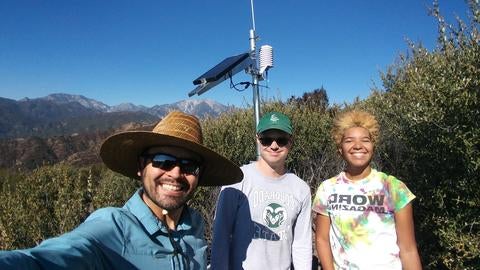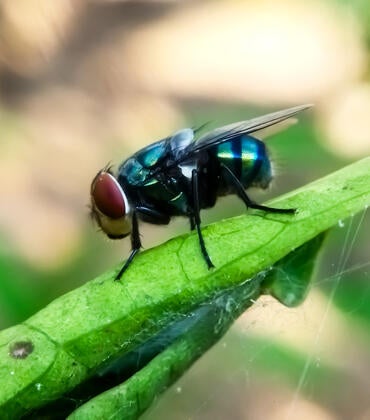
Nitrogen pollution, largely from automobile exhaust, can reduce drinking water quality and make air difficult to breathe.
Thanks to a $1.1 million grant, UC Riverside scientists will soon understand how much nitrogen dry ecosystems in Southern California can absorb before they produce negative effects.
“Levels of nitrogen pollution in Riverside’s atmosphere, and in the areas that surround this city, are among the highest in the country,” said UCR soil scientist Peter Homyak, who is leading the new study. “Nitrogen pollutants can move downwind from megacities like Los Angeles, adversely affecting our air, water, and soils.”
Scientists know nitrogen pollution can cause acid rain, damage waterways, and leach beneficial nutrients from soils. However, most of the previous research on nitrogen pollution’s environmental effects has been conducted in forests, like those in northeastern U.S.
Largely unknown is the threshold at which nitrogen becomes problematic in dryland ecosystems like those surrounding UC Riverside.
“Whereas forests are relatively moist all the time, here, we can easily go six months without rain, which changes everything,” Homyak said.
Riverside once was dominated by woodland or evergreen chaparral plants. However, the city of today is now dominated by grasses that die in summer.
“Over time, nitrogen deposits encourage the invasion of exotic grasses and, in combination with wildfires, these have replaced our native local plants,” Homyak said.
The new, three-year grant from the National Science Foundation will help Homyak and collaborators at University of Nevada, Reno, UC Santa Barbara, and the U.S. Forest Service monitor how local ecosystems process nitrogen and gauge saturation levels.
There is some amount of reactive nitrogen that circulates naturally in the ecosystem. In the right amount, nitrogen helps plants thrive because it functions like a fertilizer.
“But when you have too much, you start to have unintended and undesirable consequences,” Homyak said.
One way the team will determine whether local ecosystems are getting too much nitrogen is by monitoring for emissions of gases such as nitric oxide and nitrous oxide from soils. Nitric oxide is a precursor to ozone in the lowest layer of Earth’s atmosphere. It is both an air pollutant and a greenhouse gas, and nitrous oxide is itself also a powerful greenhouse gas, responsible for the destruction of a higher, beneficial ozone layer.
An ecosystem’s response to nitrogen is strongly influenced by microbes, so the team is also examining microbial responses to the element. If microbes have too much nitrogen, they may stop producing certain enzymes that help soils acquire nutrients.
“If we can get a better understanding of how nitrogen cycles through these drier watersheds, we can build models to help us predict what will happen under increased nitrogen loads and in a warmer, drier future,” said Erin Hanan, a fire ecologist and team member at the University of Nevada, Reno. “Dry ecosystems represent a third of Earth’s total land surface, so understanding how they respond to pollutants is important,” she said.
Current models don’t do a very accurate job of predicting how excess nitrogen from human sources moves through landscapes. Hanan said the models also are not good at predicting how much of the reactive nitrogen ends up in streams, rivers and reservoirs.
To get a better, more accurate picture of how waterways are being affected by nitrogen pollution now, and how they may be affected in the future under various climate change scenarios, Hanan is taking Homyak’s data and building new models. “This will improve the way we model nitrogen cycling and how it moves through watersheds,” Hanan said.
At the end of the project, the team will help fine-tune “critical loads,” which define the amount of nitrogen that can be added to an ecosystem without causing negative effects.
Lawmakers can then use this information to establish policies that would limit nitrogen pollution, such as reducing fertilizer use in agriculture or creating cleaner transportation systems.
“Ultimately we want to produce numbers to inform measures that effectively protect our land, our air, our water supply, and our ecosystem’s ability to support life,” Homyak said.




